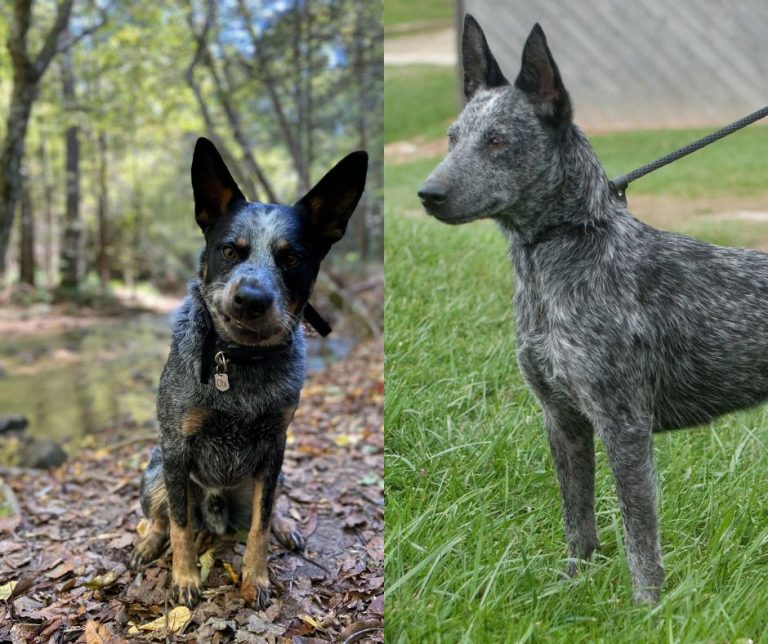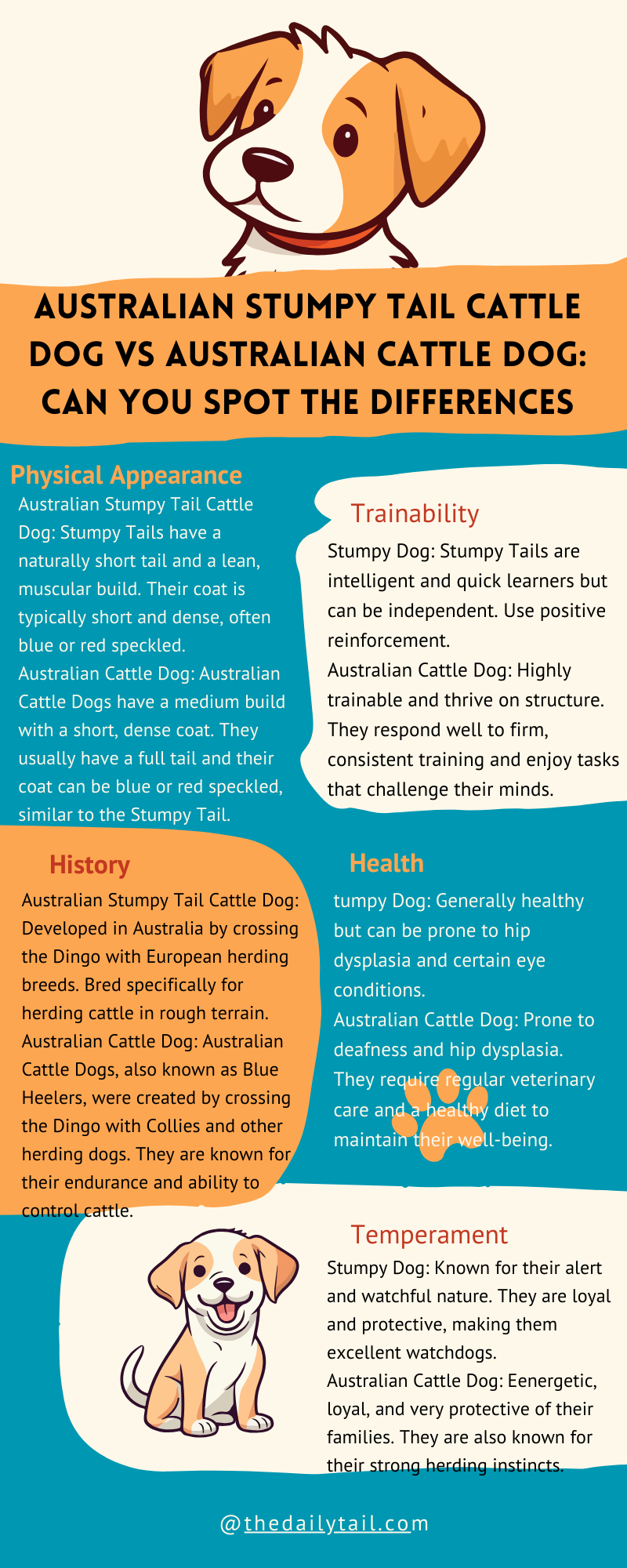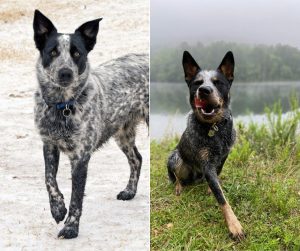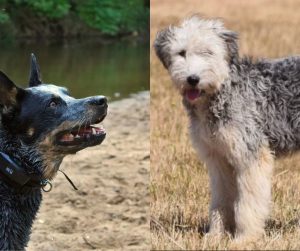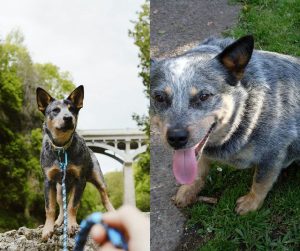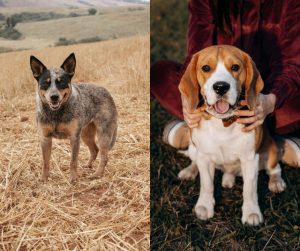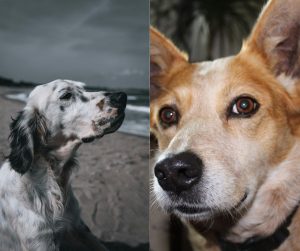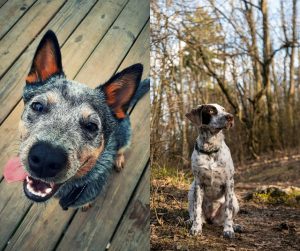When chatting about dog breeds, I often find people getting the Australian cattle dog mixed up with the Australian stumpy tail cattle dog. It’s understandable though—the names are really similar, and both breeds are born and bred for similar work.
However, they actually have quite a few differences that set them apart. I’ve always been fascinated by how dog breeds can look so alike yet be so different at the same time, so I did some digging and thought I’d share the scoop with you. I’ve lived with dogs for more than 30 years. Yet, even an experienced person like me can make a mistake. That is why I researched these two and found quite interesting things. Do you want to know what I’ve learned?
The Australian cattle dog and the Australian stumpy tail cattle dog both come from a line of hardworking herders and have historically been used for driving cattle across vast Australian landscapes. But even though they share a common job description, they’re distinguishable by their physical traits and personality quirks.
For instance, the stumpy—cute nickname, right?—has a shorter tail and is generally a bit less fiery in temperament than its cousin. If you’ve ever seen one of these dogs in action or had the joy of hanging out with them, you’ll know they’re both impressive in their own ways.
Let’s talk about what living with these dogs is like. They’re not just workaholics—they can be your loyal companion and a part of the family too. They need regular exercise to keep them happy and healthy, and they thrive when they’ve got a job to do.
If you’re considering one of these dogs for your home, it’s super important to match their energy and give them the mental stimulation they crave. Trust me, a bored cattle dog, no tail or not, will find their own entertainment, and it might not be the kind you’d like.
Let’s take a complete look at the Australian Stumpy Tail Cattle Dog vs Australian Cattle Dog breed comparison.
Key Takeaways
- The Australian cattle dog and Australian stumpy tail cattle dog are similar but distinct breeds with unique characteristics
- Both breeds hail from herding stock, require ample exercise, and fit well in active homes
- When choosing between the two, consider their physical differences and temperaments to find the best match
History and Origin of the Breeds
When I first learned about the Australian Cattle Dog and the Australian Stumpy Tail Cattle Dog, I was fascinated by their unique stories. The Australian Cattle Dog, often called the Blue Heeler, traces its origin back to the 1830s in Australia. These dogs were specifically bred to handle the rough terrain and climate of Queensland by a fellow named Thomas Hall. He crossed dogs known as Hall’s Heelers with dingoes to create a sturdy and dependable herder. Nowadays, a lot of people call this breed Halls Heeler or Queensland Heeler.
The Australian Stumpy Tail Cattle Dog has a slightly different tale. It’s believed they descended from the same stock as the Australian Cattle Dog but were bred for a naturally short tail—no docking involved here. It wasn’t until 1963 that they got recognized as their own breed by the Australian National Kennel Council, which I think really gave them a spotlight in the dog community. They had a name change in 2001 to what we know today and earned international recognition in 2003.
So, the key difference between these two is their lineage from the dingo, and the Stumpy Tail’s distinct lack of a tail. Both of these breeds came from practical needs on the Australian farms, becoming cherished for their hard work and companionship.
I’ll tell ya, these breeds are not just a testament to practical breeding but also to the importance of understanding dog histories. Knowing where they come from helps me appreciate the traits and behaviors of these remarkable Australian dogs. We have to note that the American Kennel Club recognizes the Australian Cattle Dog. On the other side, the Stumpy Tail Cattle Dog is not recognized. There are other herding dog breeds that the AKC recognizes.
Physical Traits and Appearance
When you’re trying to figure out the difference between the Australian Stumpy Tail Cattle Dog vs Australian Cattle Dog, you’ll notice that their looks aren’t quite the same. Let’s break it down and chat about what sets these pups apart when it comes to their size and how they strut their stuff with different coat colors.
Size and Weight
First up, let’s talk about size. I’m right around the middle, not too big or small, and so are these dogs. The Australian Stumpy Tail Cattle Dog is a medium-sized pup with a height at the shoulder that usually lands between 17 to 20 inches. For weight, they tend to be anywhere from 35 to 50 pounds. They’re built solid, ready to work, and have this nifty natural bobtail that you can’t miss.
On the other hand, their cousin, the Australian Cattle Dog, also falls into the medium-sized category, with similar height ranges, but might pack a few extra pounds, typically from 35 up to 62 pounds. They’re sturdy with a body that screams ‘I can work all day!’
Coat Colors and Patterns
Alright, let’s talk dress code—their coats, I mean. The Stumpy sports a coat that’s double-layered to handle whatever the weather throws at it. The topcoat is straight, with colors ranging from a speckled or mottled blue to red. Sometimes these reds and blues are so vivid, it’s like something out of a painting, and they might even throw in some darker patches over the body for good measure. Their fur is short enough to make grooming more of a breeze versus a chore, which is always nice if you’re not into high maintenance.
The Australian Cattle Dog also rocks a double coat, with a slightly longer outer coat that needs a bit more brushing to keep looking nice and neat. Their coat colors? It’s like they took a page out of the Stumpy’s book—red and blue, mottled or speckled, with the chance of some dark face markings that give them a look as if they’re wearing a mask. Really, it’s their own kind of rugged beauty, tough and ready for the great outdoors. People often mistake Red Heeler for Blue Heeler as well. They are the same herding dog breed, but with a different coat color.
Temperament and Personality
Australian Cattle Dogs and Australian Stumpy Tail Cattle Dogs share a lot of similarities, but when you hang out with them, the uniqueness of each breed really shines. Speaking from experience, you’ll discover their distinctive natures, from the way they interact with folks at home to their energy levels.
Herding dog breeds like the Blue Heeler, Border Collie, Australian Shepherd, and others, have similar temperament. Yet, they react to the same thing differently. The same happens between these two dog breeds.
Behavioral Traits
Australian Cattle Dog:
- Energetic: I can vouch for their stamina; they love to be on the move
- Intelligent: Teaching them tricks is a breeze, thanks to their smarts
- Loyal: They stick by your side like true mates
- Territorial: They’ll definitely let you know if strangers pop by
- Trainability: With their keen intelligence, dog training is a fulfilling task
Australian Stumpy Tail Cattle Dog:
- Independent: They’ve got a strong streak of doing their own thing
- Active: Just like their cousins, they won’t say no to a good run-around
- Alert: Nothing gets past these observant pups
- Affectionate: They might play it cool, but they love a good pat
Interaction with Families and Pets
Australian Cattle Dog:
- Kids: They’re mostly good with kids, especially if they’ve grown up together
- Pets: They might try to herd other pets, it’s in their nature, so keep an eye on them
Australian Stumpy Tail Cattle Dog:
- Families: I’ve noticed they’re a tad more reserved but still deeply protective
- Pets and Cats: Their herding instinct is strong, but with the right introductions, they’ll be part of the gang
Health and Care Requirements
Taking care of our furry friends is super important, and I want to make sure you’ve got the lowdown on keeping both Australian Stumpy Tail Cattle Dogs and Australian Cattle Dogs healthy and happy. I’ll walk you through their common health issues, how to keep them moving and shaking, and the nitty-gritty of their grooming needs.
Common Health Issues
These robust dogs share some similar health concerns that we should keep an eye on. Here’s a quick list:
- Hip Dysplasia: It’s a genetic thing where the hip joint doesn’t fit together perfectly, and it can cause some trouble down the road
- Elbow Dysplasia: Similar to hip problems, but it’s the elbow that’s affected
- Deafness: Keep an ear out, as both breeds can sometimes have hearing problems
- Progressive Retinal Atrophy (PRA): This can lead to blindness, so regular vet checks are key
- Cataracts: Just like people, dogs can get these too, leading to blurry vision and potential blindness
- Lens Luxation: This is when the lens in their eye gets out of whack—it’s a real issue to look out for
Exercise and Energy Levels
Both these dog breeds have more energy than a toddler on a sugar rush, so they need plenty of run-around time. They’re definitely not couch potatoes. Here’s the deal:
- Daily Exercise: I’m talking a good long walk or run. They adore chasing after a ball or frisbee
- Energy Levels: Think of them as the athletes of the dog world; they’ve got stamina to boot
Grooming Needs
Alright, let’s talk about keeping these pups looking their best. It’s not all about looks though; grooming keeps them healthy too.
- Brushing: A brush a few times a week is a good idea to keep shedding under control
- Bathing: They don’t need it all the time, maybe just a bath when they’ve rolled in something they shouldn’t have
- Additional Grooming Needs: Keep those nails clipped and ears clean to avoid any unnecessary vet trips
Training and Mental Stimulation
When training Australian Stumpy Tail Cattle Dogs and Australian Cattle Dogs, I’ve found that a mix of consistent dog training and ample mental stimulation is key for these smart, high-energy breeds.
Training Tips and Recommendations
I always start with positive reinforcement because it works wonders with these breeds. They’re not just pets; they’re working dogs with a lot of brain power and even more energy. So, it’s important to set clear rules and stick to them. Here’s how I keep their training on track:
- Keep Sessions Short and Fun: I aim for 5 to 15 minutes to keep their attention
- Consistency is Key: I’m always clear and consistent with commands, which makes it easier for them to follow
- Socialize Early: Meeting new people, pets, and experiences helps them become well-adjusted adults
- Address Prey Drive: A strong ‘leave it’ command is a lifesaver for managing their natural prey drive
I’ve personally seen how quickly they pick up on tasks – these dogs are very easy to train if you have the right techniques.
Mental Stimulation Activities
These dogs need to do more than just burn off energy; they need activities that make them think. Here are some of my go-to activities:
Daily Exercise: A long walk or a good run is just the start.
- Agility Training: It’s their bread and butter; the combo of physical and mental challenges is perfect
- Puzzle Toys: Keeps their minds ticking even on a rainy day
- Herding Classes: If accessible, it’s a fantastic outlet for their natural herding instincts
- Dog Sports: They excel in many sports, from disc dog to flyball
Breeds in Work and Play
I’ve always been fascinated by the endless energy and dedication of dogs, especially those that work on farms and ranches.
It’s clear their roles don’t just stop at herding; they excel in sports and competition, too. I think it’s absolutely amazing to see them in action.
Roles in Herding and Working
Working on farms and ranches asks for a lot of grit, and that’s where these dogs shine.
Both the Australian Stumpy Tail Cattle Dog and Australian Cattle Dog, commonly known as heelers, are born and bred for this kind of tough work.
My own experience has shown me that their work ethic is second to none.
They use their intelligence and stamina to manage herds, and their sharp instincts make them top-notch working dogs.
They don’t just push the cattle around; their precise movements and body language can keep a large group of animals in check. I often find their way of working almost like a dance – a highly skilled and focused one!
- Key Tasks: herding, protecting livestock
- Typical Work Environments: ranches, farms
Participation in Competitions and Sports
Now, outside of the workday, these dogs don’t just lay around. They often take part in dog sports like agility, where they can show off their lightning-speed running and impressive coordination.
I’ve personally seen them maneuver through courses with such eagerness and speed, it takes my breath away.
Agility competitions are a blast for them – it’s like a fun game that gets all that energy out.
But make no mistake, while it’s play, they’re fiercely competitive and natural athletes.
Whether it’s a high jump or a rapid dash through an agility course, they tackle it all with the same focus and drive they bring to herding work.
- Popular Dog Sports:
- Agility
- Obedience
- Key Traits: speed, dexterity, competitive spirit
Choosing the Right Breed for You
When you’re looking to add a furry member to your family, it’s important to consider whether the breed fits into your daily routine and living situation.
Comparing the Breeds for Your Lifestyle
Australian Stumpy Tail Cattle Dogs and Australian Cattle Dogs both hail from a strong working breed lineage. They’re active and thrive on having a job to do. Here’s what I’ve found in plain speak:
Exercise Needs:
- Australian Stumpy Tail Cattle Dog:
- High energy levels; needs lots of exercise
- Ideal for spacious homes with yards
- Australian Cattle Dog:
- Also high energy but may manage with less space if exercised properly
Space Considerations:
- If you live in an apartment, consider that these dogs may feel cramped
- Both breeds need space but a well-exercised dog is a happy dog, even with less room
Families and Small Children:
- Both breeds can be great with families if socialized early on
- However, their herding instincts may kick in with smaller kids
Personality Traits:
- Stumpy Tail is known to be a bit more reserved.
- The Aussie Cattle Dog is often more outgoing.
Finding a Responsible Breeder
When I decided to bring a dog into my life, I knew finding a good breeder was key.
A responsible breeder:
- Is registered with a recognized body like the AKC or the Australian National Kennel Council.
- Will have purebred pups with a traceable lineage.
- Allows you to meet the puppies’ parents and see the living conditions.
- Doesn’t shy away from answering your questions about their breeding practices.
Remember, reputable breeders are there to help match you with a dog that suits your life.
Be wary of those who just want to make a quick sale.
Your future pet’s health and happiness come first.

